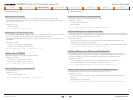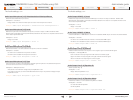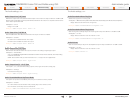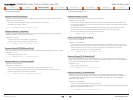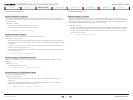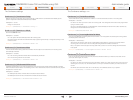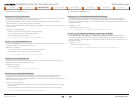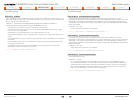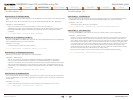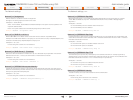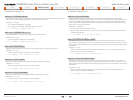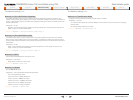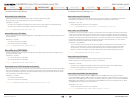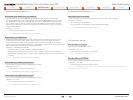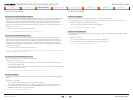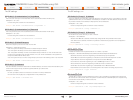
D14635.02—MARCH 2010
20
TANDBERG Codec C90 and Profiles using C90
Administrator guide
Contents Introduction Advanced configuration Password protection About monitors Audio matters Appendices Contact us
www.tandberg.com
H323 Profile [1..1] CallSetup Mode
The H.323 Call Setup Mode defines whether to use a Gatekeeper or Direct calling when establishing H323
calls.
NOTE! Direct H.323 calls can be made even though the H.323 Call Setup Mode is set to Gatekeeper.
Valuespace: <Direct/Gatekeeper>
Direct: An IP-address must be used when dialling in order to make the H323 call.
Gatekeeper: The system will use a Gatekeeper to make a H.323 call. When selecting this option the
H323 Profile Gatekeeper Address and H323 Profile Gatekeeper Discovery settings must also be
configured.
Example: H323 Prole 1 CallSetup Mode: Gatekeeper
H323 Profile [1..1] Gatekeeper Address
Specifies the IP address of the Gatekeeper. Requires the H.323 Call Setup Mode to be set to Gatekeeper
and the Gatekeeper Discovery to be set to Manual.
Valuespace: <S: 0, 255>
Format: String with a maximum of 255 characters.
Example: H323 Prole 1 Gatekeeper Address: “10.47.1.58”
H323 Profile [1..1] Gatekeeper Discovery
Determines how the system shall register to a H.323 Gatekeeper.
Valuespace: <Manual/Auto>
Manual: The system will use a specific Gatekeeper identified by the Gatekeeper’s IP-address.
Auto: The system will automatically try to register to any available Gatekeeper. If a Gatekeeper
responds to the request sent from the codec within 30 seconds this specific Gatekeeper will be used.
This requires that the Gatekeeper is in auto discovery mode as well. If no Gatekeeper responds, the
system will not use a Gatekeeper for making H.323 calls and hence an IP-address must be specified
manually.
Example: H323 Prole 1 Gatekeeper Discovery: Manual
H323 Profile [1..1] H323Alias E164
The H.323 Alias E.164 defines the address of the system, according to the numbering plan implemented
in the H.323 Gatekeeper. The E.164 alias is equivalent to a telephone number, sometimes combined with
access codes.
Valuespace: <S: 0, 30>
Format: Compact string with a maximum of 30 characters. Valid characters are 0–9, * and #.
Example: H323 Prole 1 H323Alias E164: “90550092”
H323 Profile [1..1] H323Alias ID
Lets you specify the H.323 Alias ID which is used to address the system on a H.323 Gatekeeper and will
be displayed in the call lists. Example: “firstname.surname@company.com”, “My H.323 Alias ID”
Valuespace: <S: 0, 49>
Format: String with a maximum of 49 characters
Example: H323 Prole 1 H323Alias ID: “rstname.surname@company.com”
H323 Profile [1..1] PortAllocation
The H.323 Port Allocation setting affects the H.245 port numbers used for H.323 call signalling.
Valuespace: <Dynamic/Static>
Dynamic: The system will allocate which ports to use when opening a TCP connection. The reason for
doing this is to avoid using the same ports for subsequent calls, as some firewalls consider this as a
sign of attack. When Dynamic is selected, the H.323 ports used are from 11000 to 20999. Once 20999
is reached they restart again at 11000. For RTP and RTCP media data, the system is using UDP ports
in the range 2326 to 2487. Each media channel is using two adjacent ports, ie 2330 and 2331 for RTP
and RTCP respectively. The ports are automatically selected by the system within the given range.
Firewall administrators should not try to deduce which ports are used when, as the allocation schema
within the mentioned range may change without any further notice.
Static: When set to Static the ports are given within a static predefined range [5555–6555].
Example: H323 Prole 1 PortAllocation: Dynamic
The H323 settings, cont...The H323 settings, cont...
Contact us
Contents
Introduction
Advanced configuration
Password protection
About monitors
Audio matters
Appendices
Advanced config.



